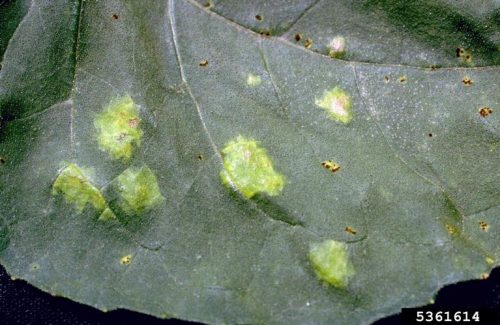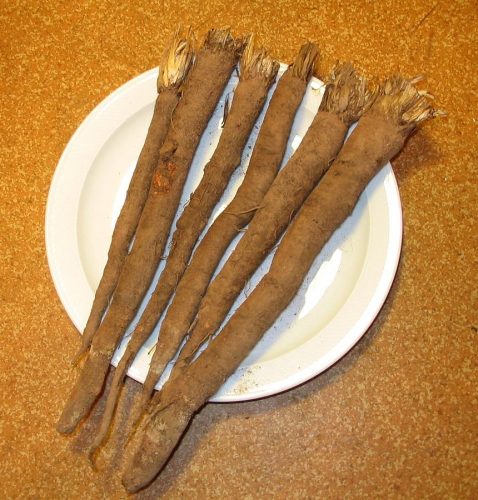Salsify has a long taproot. Salsify belongs to the ‘forgotten’ vegetables.
Also known as:
Spanish salsify
Black oyster plant
Viper’s herb
Scorzonera
You are viewing the mobile-adapted version of the page.
The one for tablets, laptop and desktop also provides general information, such as origin and cultivation.
Salsify – (Scorzonera) belongs to the sunflower family (Asteraceae). Sow in mid-April in open ground immediately in final spot. Salsify grows only slowly. Keep them weed-free. Harvesting can be done in from October. Salsify likes light soil; in heavy clay, the roots branch out. Salsify is not very susceptible to fungi and pests.
The long taproot of salsify has a nutty flavor and was also called winter aspa
Bugs
The salsify plant is not growing, growths on the root, root system shows many small root knots (galls): northern root-knot nematode (Meloidogyne hapla).
Fungi & diseases

Yellow mold spots on the underside of leaves: white rust (Albugo tragopogonis).
Black or orange spots on the roots and silver-gray spots turning to brown: Parsnip canker (Itersonilia pastinacae).

